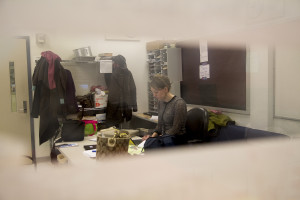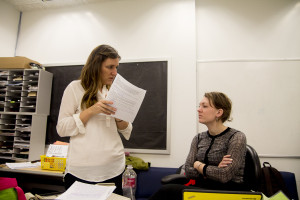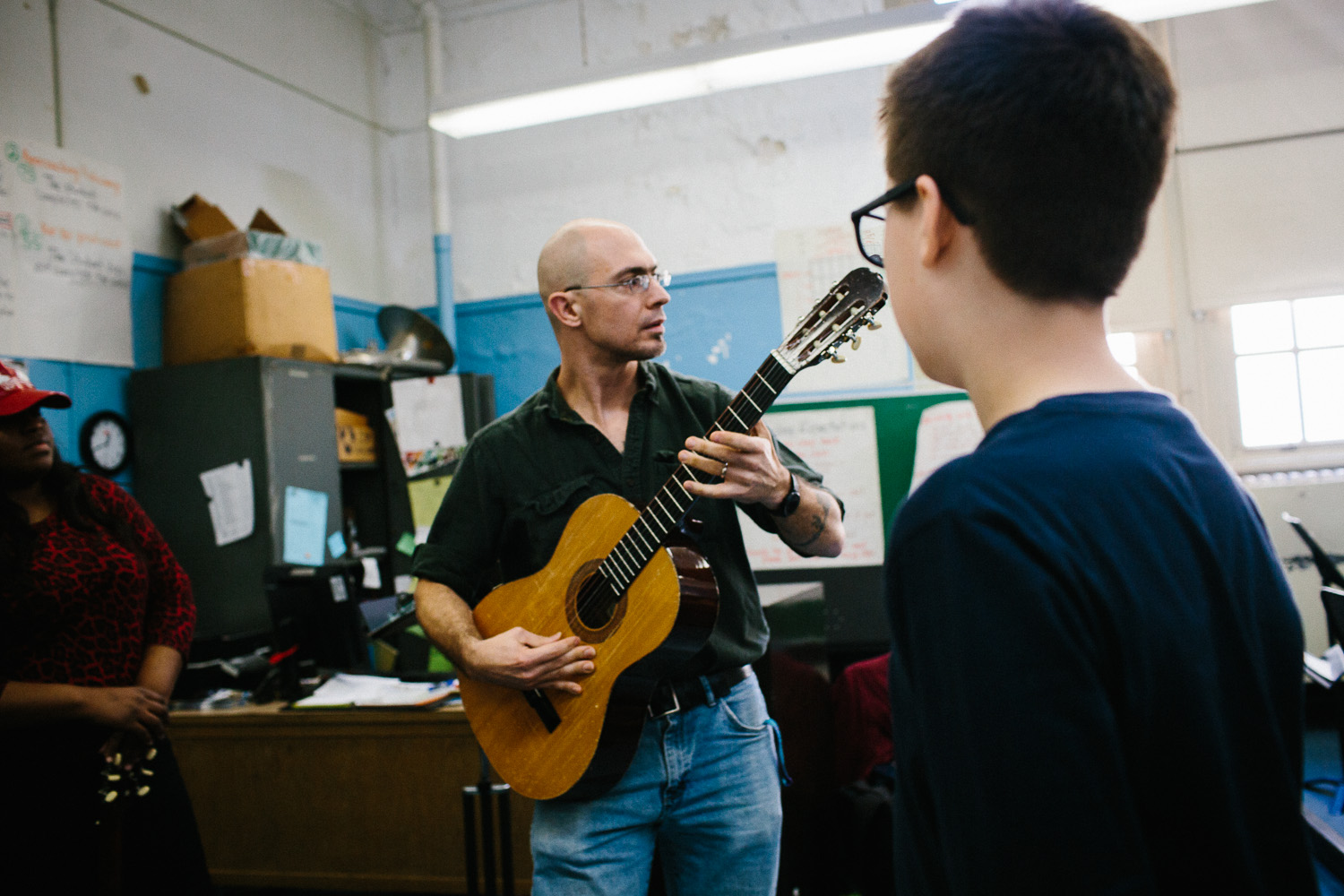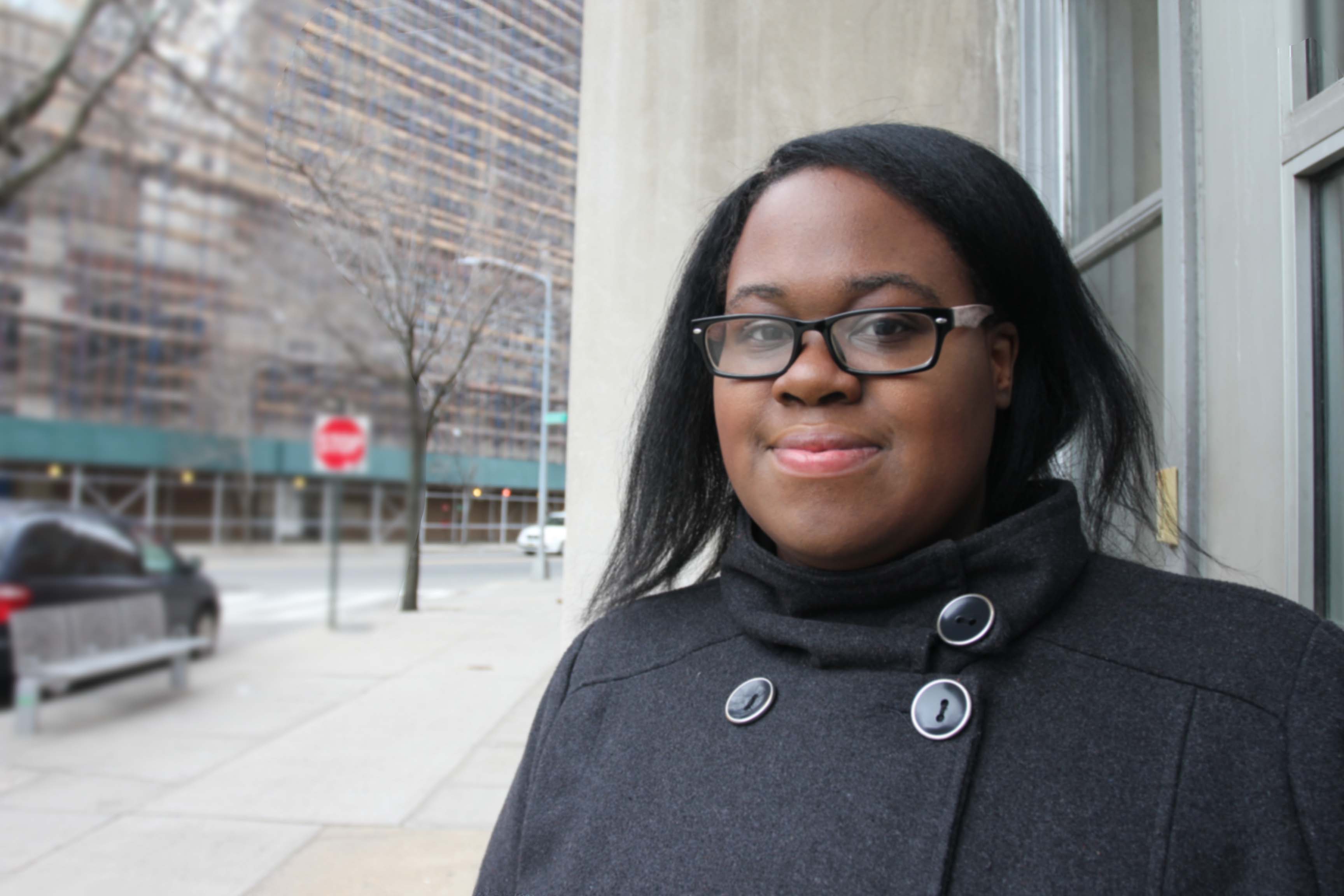Emma Schneider, a 31-year-old California transplant, walked into the assistant principal’s office at the Urban Assembly School for Applied Math and Science (AMS) in the Bronx after her last section of ninth grade global history. She sat down and then rested her head on the table for a brief moment of relief.
“I’m sorry,” she said. “My brain is fried.”
Her normally neatly kept blonde hair was tousled. Her grey blouse was slightly ruffled.
When she raised her head, she began to reflect on the pressures of being a first-year teacher.
“We’re all exhausted and trying to figure it out,” she said.
Just getting through the first year is an accomplishment for a new teacher.

According to a report by the National Commission on Teaching and America’s Future (NCTAF), 46 percent of new teachers leave within the first five years. The situation is even rougher in New York City, where 30 percent of starting teachers leave within the first three years and 16 percent leave in their first year alone, according to a report by the Department of Education.
Many new teachers say they leave because of the stress of the job and struggles balancing work and their personal lives – issues Schneider is facing now in her sixth month at AMS.
Before she makes the commute from Jersey City to the South Bronx every morning, Schneider leaves a note for Kevin Brodeur, her 37-year-old fiancé. When she returns home after school and yoga, she usually finds a reply from him. He works late nights as bartender in Manhattan’s Flatiron District. She’s busy many nights as well, taking classes at St. John’s University for her master’s degree in special education.
Thursday is the only night that their clashing schedules align, the only day for just them. They usually have dinner and a movie. Brodeur proposed in September, but the wedding is postponed, also because of their busy schedules.
“He’s very supportive of me,” she said. “He likes to hear the stories. He’s my rock.”
Teaching wasn’t Schneider’s original plan. She graduated in 2006 from Chapman University in Orange, Calif., with a degree in theater. After graduating, she found a little work acting – mostly doing Shakespeare in community theater and eating hamburgers in TV commercials. To make additional money, she worked as a waitress and substitute teacher. Her students then were not unlike the ones she teaches today – from low-income families and in need of extra help and support that she felt she could give.
In 2009, she moved to New York City to pursue acting, but found she was stuck “off-off Broadway.” As her acting dreams faded, she began to feel that teaching might be her real calling.
After three years in the city, Schneider applied to the New York Teaching Fellows, an alternative certification program that trains its teachers to work in disadvantaged communities.
“It seemed like a long shot, she said. “I jumped through a lot of hoops.”
At the end of her training in 2013, she was eager to get into the classroom. She met David Kruhlwich and Rasaan Oglivie, the principal and assistant principal of AMS, at a job fair. AMS opened in 2004, and a sizable portion of the school’s teachers are in their first few years of teaching. Many come from Teach For America and the New York City Teaching Fellows program.
The lack of adequate support from school administrators often drives first-year teachers away, according to the National Commission on Teaching. Administrators at AMS said that they’ve tried to build a strong support system to curtail teacher attrition, using teaching teams and a student-teacher advisory model, but the reality is that some teachers do leave. It also helps that Kruhlwich and Ogilvie were both previously teachers at AMS.
Schneider, however, said she is committed to staying.
Her South Bronx students are mostly Latino and black and from low-income households. The school is located in the poorest congressional district in the nation and offers many students their one hot meal of the day; a little over 90 percent of its students receive free or reduced lunch.
According to a report by the Citizen’s Committee for Children, the South Bronx is one of the hardest areas in New York City for kids to grow up. Fewer than 30 percent of kids meet state and city reading and math standards, compared to nearly 50 percent citywide and the poverty rate for children is nearly doubled compared to the city.
Schneider’s success is crucial to her students’ futures. And she knows it.
She herself grew up straddling the fence of economic uncertainty in the San Francisco Bay area, where her father owns a construction company. When the economy was bad, so was his business. But when the economy was good, life was better for the Schneiders.

“My parents were very good about making it feel like you had what you needed,” she said. “Sometimes we were really poor, and sometimes we were okay.”
Schneider’s mother was a teacher, and is now a vice-principal at a public school in California, and she stressed education. She now gives Schneider teaching pointers on “being tough, but loving them when you’re supposed to.”
Her California upbringing and the fact that she’s essentially a freshman gives Schneider some common ground with her students.
“They’re figuring out their own way too,” she said. “We connect in that way.”
Schneider’s overall struggle as a newcomer to the classroom, though, is being in control of her classroom.
One Friday afternoon in February, hours before students at AMS were to be released for a week-long winter break, nearly two-dozen students moved from the noisy hallway and funneled into Room 15, Schneider’s ninth grade global history class. She began to write the first order of business on the white board:
“1. What is a disease?”
“2. What was the Bubonic plague?”
Schnieder stood in the front of the class with a clipboard and took attendance as students entered the room. With only 57 minutes of instruction time, her second order of business was to quiet the rowdy freshmen.
Some students sat in their seats and tapped their feet and others bounced their legs underneath their desks while talking loudly to each other. Five minutes passed. Some students began working on that day’s lesson; others were slowly getting there.
This was what she describes as her “good section,” which she determines by the ratio of “high” students, the ones who get the material, versus “low” students, the ones who don’t. Many of them get it, she said, and her goal is to pull the “squeaky wheels”–as she calls them–to at least the middle to understand how to analyze and ask thoughtful questions about the material.
It was Valentine’s Day, and two boys in the back of the room were vying for the attention of a girl seated between them. Other students were still chatting. One student came in late, disrupted the class with outbursts and profanity, and then abruptly exited. Schneider later admitted that she has thought a lot about this student and worries about him.
At this point, Schneider needed everyone’s attention, and she needed it quickly. Only 47 minutes to go.
The young man on the right side of the girl yelled at Schneider for interrupting his flirting.
“Miss,” he exclaimed.
She scowled. He gave a wry eye roll. She walked over with her clipboard in hand, and looked him in the eye.
“Now, say you’re sorry,” she told him, softly.
“Sorry,” he said. Finally, he paid attention. With 43 minutes remaining, Schneider had the full attention of everyone. She would still have to deal with the sudden outbursts, the disrespect and the occasional “squeaky wheel”—as she puts it–but for the most part, class had begun.
Classroom management is often a struggle for new teachers like Schneider.
“I think my management has gotten a lot better,” she said. “I’m learning a lot on how to teach them.”
Schneider said that she’s trying to strike the right balance between nice and stern, someone who can effectively get the lesson across and someone who “lays down the law.”
Paul Barrett, 21, another first-year teacher who came to AMS through Teach For America, said his classroom management style is very different, but he is still learning how to get the lesson across effectively.
“It’s typical for first-year teachers to feel that way,” he said.

Schneider, Barrett and their team leader, China Camacho, a veteran teacher at AMS, all teach global history, with Camacho teaching upperclassmen. This team structure and their advisory model, where teachers advise small groups of students from freshman to senior year, helps maintain the school’s support system. Barrett said he sometimes notices how sometimes Schneider is “a little too soft” and then tries to aim for firmness in her classroom management style. He also understands that sometimes he is too hard and tries to emulate her niceness.
“The firmness is something she borrows from me,” he said. “We have different personalities, but can relate to one another being in our first year.”
Schneider also said she needs to be tougher.
“I’m too nice,” she said. “I’m trying not to be too nice. But if I start screaming at kids, they’ll start looking at me like I’m nuts.”
Schneider often meets students at lunch, after school or talks to them over the phone at home to make sure that they get the lesson, and that they understand the homework. Camacho, who is more strict and forthcoming, said that Schneider has to remember that she is in control of the classroom.
“She’s definitely works on it a lot and thinks about it a lot,” said Camacho.
During the selection, hiring and screening process, Schneider’s superiors said that they liked her energy in the classroom and ability to take criticism and turn it into action.
“She had kid sense,” said Ogilvie, the assistant principal. “She also had the capacity to reflect on how to make improvements to the lesson.”
Her unique background in acting and waiting tables, along with her experience substituting in LA classrooms, was also an asset. Schneider said that both past jobs have helped her in her first year as a teacher, especially acting.
“Being in front of the classroom is all about stage presence,” she said. “You have to know when the audience is starting to get bored. You have to have a little bit of energy and drama.”
Acting also taught her how to put on a smile during parent-teacher conferences and teach lessons in a unique way.
“I see the lessons as a scene and the class as the audience,” she said. “And we have to get through the lesson together.”
From her first demo lesson during hiring up until now, “she definitely improved herself,” said Ogilvie. The main issue though is that she sometimes “asks questions, then answers them,” without allowing for the students to “reflect thoughtfully,” something their curriculum requires.
“I really want to get better,” Schneider said.
But as the end of the year approaches, she’s not looking too far ahead.
“I want to survive this first,” she said.



